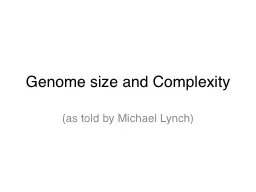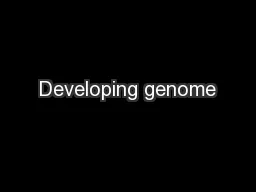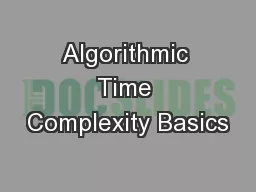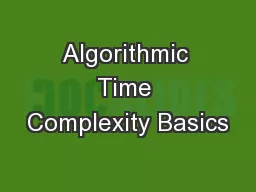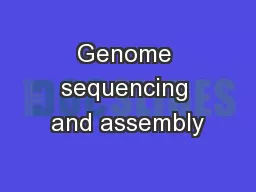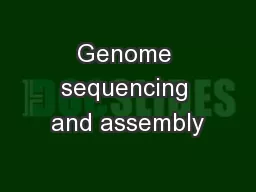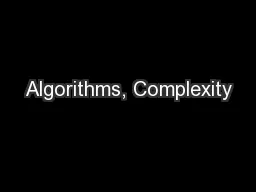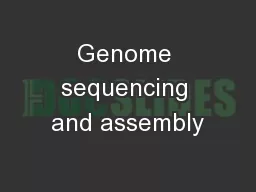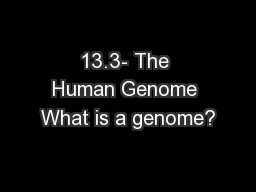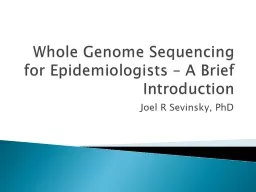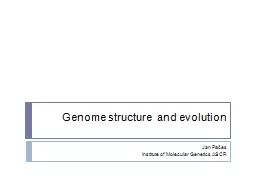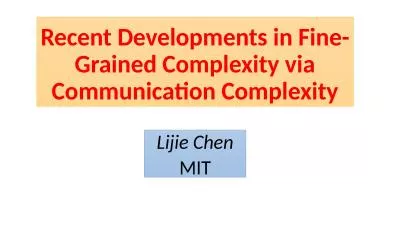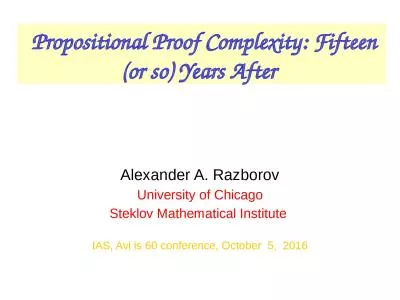PPT-Genome size and Complexity
Author : sherrill-nordquist | Published Date : 2016-05-26
as told by Michael Lynch Genome size and complexity varies across the tree of life Lynch 2007 Some Big Questions What is the relationship between genomic and organismal
Presentation Embed Code
Download Presentation
Download Presentation The PPT/PDF document "Genome size and Complexity" is the property of its rightful owner. Permission is granted to download and print the materials on this website for personal, non-commercial use only, and to display it on your personal computer provided you do not modify the materials and that you retain all copyright notices contained in the materials. By downloading content from our website, you accept the terms of this agreement.
Genome size and Complexity: Transcript
Download Rules Of Document
"Genome size and Complexity"The content belongs to its owner. You may download and print it for personal use, without modification, and keep all copyright notices. By downloading, you agree to these terms.
Related Documents

